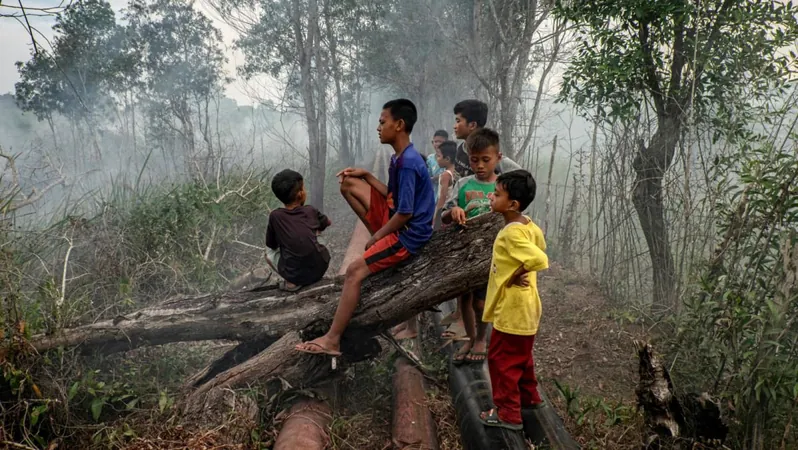
Indonesia Sees an Astonishing 60% Drop in Forest and Land Fires This Year!
2024-10-14
Author: Ming
Significant Decline in Forest Fires
In a remarkable turn of events, Indonesia has experienced a significant decline in forest and land fires this year compared to last year. Mr. Thomas Nifinluri, the director of the Environmental and Forestry Ministry's fire control agency, revealed on October 13 that satellite observations indicate a staggering 59.4% reduction in fire hotspots across the archipelago.
"From January 1 to October 10, 2024, we recorded 3,163 fire hotspots, a dramatic fall from the 7,786 observed in the same timeframe last year," Mr. Nifinluri stated, highlighting the government's proactive measures in combating this environmental crisis.
Government's Commitment
As Indonesia prepares for the inauguration of President-elect Prabowo Subianto on October 20, the ministry remains steadfast in its commitment to tackling wildfire risks. Local environmental activists, however, have criticized the outgoing administration of President Joko Widodo for failing to effectively manage forest fires over his nine-year term, which devastated more than 7.6 million hectares of land.
In the past, President Widodo had issued stern warnings to authorities, indicating that police and military officials would be removed from their positions should they fail to contain fire outbreaks during the dry season. Notably, Indonesia's dry season typically spans from April to October, exacerbating fire risks in the region.
Statistics on Affected Areas
Recent statistics detail that the largest areas affected by fires this year include East Nusa Tenggara with 93,572.19 hectares burned, followed by West Nusa Tenggara and East Java. The total carbon emissions linked to these incidents from January to September 2024 have reached a disconcerting 41.2 million tons of carbon dioxide.
Provinces and Emergency Declarations
The ministry reported that eight provinces, namely Riau, South Sumatra, West Nusa Tenggara, Jambi, East Kalimantan, West Kalimantan, East Nusa Tenggara, and South Kalimantan, have declared states of emergency. These regions are receiving heightened preventive measures to mitigate fire outbreaks.
Community Efforts and Innovation
Efforts to combat these natural disasters have included community involvement, with the ministry enlisting over 7,400 local volunteers across 29 provinces to increase awareness and aid in fire control. Additionally, weather modification techniques, such as sodium chloride seeding to induce rainfall, have been successfully employed in several provinces, aiding in fire suppression efforts during critical times.
Aerial operations involving air patrols and water bombing missions have been launched since March 2, utilizing helicopters from the National Agency for Disaster Management to combat fires across regions like North Sumatra, Riau, and South Kalimantan.
Encouraging Rainfall Patterns
Encouragingly, recent rainfall patterns have brought relief, with 19% of Indonesia entering the rainy season, further assisting in the prevention of forest fires. This includes parts of Aceh, Riau, and West Sumatra, among others.
Conclusion and Hope for the Future
As Southeast Asia frequently grapples with haze due to fires, Indonesia's proactive strides this year showcase its dedication to environmental stewardship. Will these commendable efforts lead Indonesia to a new era of sustainable land management? Only time will tell, but for now, the significant decrease in fire hotspots offers a glimmer of hope for the nation and its vibrant ecosystems.

 Brasil (PT)
Brasil (PT)
 Canada (EN)
Canada (EN)
 Chile (ES)
Chile (ES)
 España (ES)
España (ES)
 France (FR)
France (FR)
 Hong Kong (EN)
Hong Kong (EN)
 Italia (IT)
Italia (IT)
 日本 (JA)
日本 (JA)
 Magyarország (HU)
Magyarország (HU)
 Norge (NO)
Norge (NO)
 Polska (PL)
Polska (PL)
 Schweiz (DE)
Schweiz (DE)
 Singapore (EN)
Singapore (EN)
 Sverige (SV)
Sverige (SV)
 Suomi (FI)
Suomi (FI)
 Türkiye (TR)
Türkiye (TR)